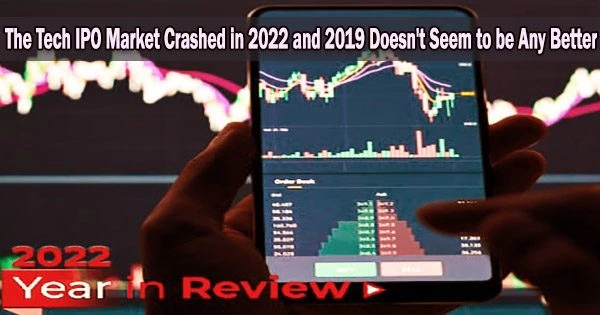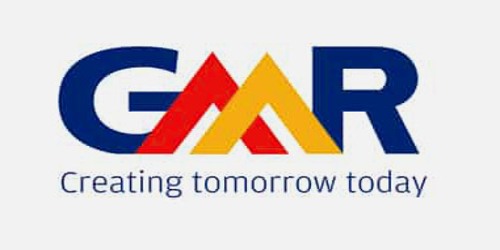After a record-breaking year for tech IPOs in 2021 that saw the launches of the stock trading app Robinhood, the electric car manufacturer Rivian, the restaurant software provider Toast, the cloud software providers GitLab and HashiCorp, and several other companies, 2022 has been a complete bust.
This year, Intel’s spinoff of Mobileye, a 23-year-old business that develops technology for self-driving cars and was formerly publicly traded until its acquisition in 2017, was the sole notable technology offering in the United States. Mobileye raised just under $1 billion, and no other U.S. tech IPO pulled in even $100 million, according to FactSet.
In 2021, by contrast, there were at least 10 tech IPOs in the U.S. that raised $1 billion or more, and that doesn’t account for the direct listings of Roblox, Coinbase and Squarespace, which were so well-capitalized they didn’t need to bring in outside cash.
When the calendar changed, the story took a completely different turn, with investors fleeing risk and the prospect of future growth in favor of successful companies believed to have strong enough balance sheets to withstand an economic downturn and sustained higher interest rates. Pre-IPO companies altered their plans after seeing their public market peers plunge by 50%, 60%, and in some cases, more than 90% from last year’s highs.
In total, IPO deal proceeds plummeted 94% in 2022 from $155.8 billion to $8.6 billion according to Ernst & Young’s IPO report published in mid-December. As of the report’s publication date, the fourth quarter was on pace to be the weakest of the year.
With the Nasdaq Composite headed for its steepest annual slump since 2008 and its first back-to-back years underperforming the S&P 500 since 2006-2007, tech investors are looking for signs of a bottom.
But David Trainer, CEO of stock research firm New Constructs, says investors first need to get a grip on reality and get back to valuing emerging tech companies based on fundamentals and not far-out promises.
Trainer was raising the red flag as tech IPOs took off in 2020 and 2021 by publishing in-depth reports on software, e-commerce, and related companies that were bringing their sky-high private market valuations to the public markets. Since Robinhood, Rivian, and Sweetgreen are all down at least 85% from their highs from last year, many of Trainer’s predictions now appear to have been accurate when the market was flying.
“Until we see a persistent return to intelligent capital allocation as the primary driver of investment decisions, I think the IPO market will struggle,” Trainer said in an email. “Once investors focus on fundamentals again, I think the markets can get back to doing what they are supposed to do: support intelligent allocation of capital.”
Lynn Martin, president of the New York Stock Exchange, told CNBC’s “Squawk on the Street” last week that she’s “optimistic about 2023″ because the “backlog has never been stronger,” and that activity will pick up once volatility in the market starts to dissipate.
Hangover from last year’s ‘binge drinking’
The challenge for companies in the pipeline is more complex than just surviving a bear market and volatility. They must also admit that the valuations they received from private investors do not accurately capture the shift in market sentiment.
The funding of companies over the past five years occurred at the end of a protracted bull run, when interest rates were at historic lows and technology was driving significant changes in the economy. Facebook’s mega IPO in 2012 and the millionaires minted by the likes of Uber, Airbnb, Twilio and Snowflake recycled money back into the tech ecosystem.
While this was going on, venture capital firms raised ever-increasing funds to compete with a new generation of hedge funds and private equity firms that were investing so much money in technology that many companies chose to stay private for longer than they would have otherwise.
Money was plentiful. Financial discipline was not.
In 2021, VC firms raised $131 billion, topping $100 billion for the first time and marking a second straight year over $80 billion, according to the National Venture Capital Association. The average post-money valuation for VC deals across all stages rose to $360 million in 2021 from about $200 million the prior year, the NVCA said.
These values are in the past, and any businesses who collected money during that time will need to accept reality before going public.
High-value late-stage firms have already experienced setbacks, albeit they may not have been as severe as they should have been.
Stripe cut its internal valuation by 28% in July, from $95 billion to $74 billion, the Wall Street Journal reported, citing people familiar with the matter. Checkout.com slashed its valuation this month to $11 billion from $40 billion, according to the Financial Times. Instacart has taken multiple hits, reducing its valuation from $39 billion to $24 billion in May, then to $15 billion in July, and finally to $10 billion this week, according to The Information.
Klarna, a provider of buy now, pay later technology, suffered perhaps the steepest drop in value among big-name startups. The Stockholm-based company raised financing at a $6.7 billion valuation this year, an 85% discount to its prior valuation of $46 billion.
“There was a hangover from all the binge drinking in 2021,” said Don Butler, managing director at Thomvest Ventures.
Butler doesn’t expect the IPO market to get appreciably better in 2023. Ongoing rate hikes by the Federal Reserve are looking more likely to tip the economy into recession, and there are no signs yet that investors are excited to take on risk.
“What I’m seeing is that companies are looking at weakening b-to-b demand and consumer demand,” Butler said. “That’s going to make for a difficult ’23 as well.”
Before the IPO market begins to recover, Butler believes Silicon Valley must adjust to a move away from the growth-first mentality. In addition to increasing capital efficiency, demonstrating a short-term path to profitability, and lowering hiring expectations, this calls for structural adjustments to the way organizations are run.
For instance, in recent years, startups have heavily invested in human resources to deal with the flood of new employees and the aggressive hiring practices prevalent in the sector. There’s far less need for those jobs during a hiring freeze, and in a market that’s seen 150,000 job cuts in 2022, according to tracking website Layoffs.fyi.
Butler said he expects this “cultural reset” to take a couple more quarters and said, “that makes me remain pessimistic on the IPO market.”
Cash is king
One high-priced private company that has maintained its valuation is Databricks, whose software helps customers store and clean up data so employees can analyze and use it.
Databricks raised $1.6 billion at a $38 billion valuation in August of 2021, near the market’s peak. As of mid-2021, the company was on pace to generate $1 billion in annual revenue, growing 75% year over year. It was on everybody’s list for top IPO candidates coming into the year.
Databricks CEO Ali Ghodsi isn’t talking about an IPO now, but at least he’s not expressing concerns about his company’s capital position. In fact, he says being private today plays to his advantage.
“If you’re public, the only thing that matters is cash flow right now and what are you doing every day to increase your cash flow,” Ghodsi told CNBC. “I think it’s short-sighted, but I understand that’s what markets demand right now. We’re not public, so we don’t have to live by that.”
Ghodsi said Databricks has “a lot of cash,” and even in a “sky is falling” scenario like the dot-com crash of 2000, the company “would be fully financed in a very healthy way without having to raise any money.”
Databricks has avoided layoffs and Ghodsi said the company plans to continue to hire to take advantage of readily available talent.
“We’re in a unique position, because we’re extremely well-capitalized and we’re private,” Ghodsi said. “We’re going to take an asymmetric strategy with respect to investments.”
That approach may make Databricks an attractive IPO candidate at some point in the future, but the valuation question remains a lingering concern.
Snowflake, the closest public market comparison to Databricks, has lost almost two-thirds of its value since peaking in November 2021. Snowflake’s IPO in 2020 was the largest ever in the U.S. for a software company, raising almost $3.9 billion.
Snowflake’s growth has remained robust. Revenue in the latest quarter soared 67%, beating estimates. Adjusted profit was also better than expectations, and the company said it generated $65 million in free cash flow in the quarter.
Still, the stock is down almost 20% in the fourth quarter.
“The sentiment in the market is a little stressed out,” Snowflake CEO Frank Slootman told CNBC’s Jim Cramer after the earnings report on Nov. 30. “People react very strongly. That’s understood, but we live in the real world, and we just go one day at a time, one quarter at a time.”
















